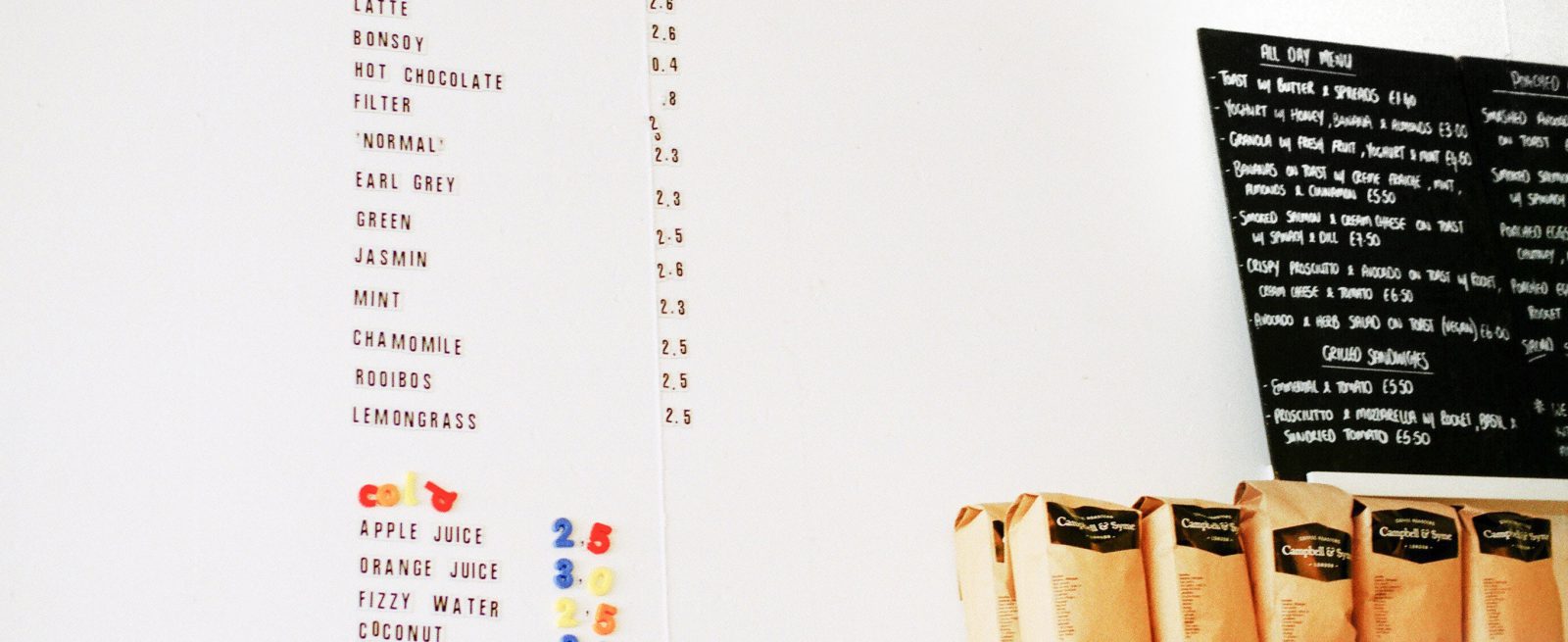Pricing It Right on Your Restaurant Menu
4 Min Read By Rodion Yeroshek
The right price is the one that guests are willing to pay, ensuring maximum profit for the restaurant. It doesn’t matter how many restaurant management and menu engineering books you read, you will never find clear rules for setting the prices of menu items. Experts advise taking how much you spend on purchasing produce and multiplying this amount by three. However, the best teacher is experience. Despite the fact that there is no precise formula for fixing the right prices, I’ll try to shed light on this question and help you figure out how to price your menu.
Before Setting Prices
The Golden Rule of the restaurant business teaches us that menu creation always comes first. Don’t make any decisions on equipment and interior design until the restaurant menu is ready. At the very least, decide on the cuisine and the concept of your venue.
The process of calculating prices lies somewhere between a science, an art and intuition.
Many factors influence how menu prices should be set. I suggest you take note of them before fixing new prices or updating existing ones.
Unstable food prices: Ingredient prices may rise when you least expect them to. You could be prudent, setting higher prices for products which may go up in price. Thus, you won’t suffer losses, even if you spend a little more on these products.
Restaurant concept: Menu prices in a luxury restaurant will obviously differ from prices in restaurants with a lower level of service. Ensure your prices meet the quality of service you provide to customers. For example, there is no way a fine dining menu would include fast food items. And fresh, delicious food is not the only thing a good restaurant has to offer; there are also the interior design, pleasant atmosphere, and quality service. All of this directly affects how the menu should be priced.
Determine the price range: Every restaurant is individual, and its menu prices depend on location, labor costs, food supply, and demand. First of all, decide on the minimum price that you can offer your customers while achieving the desired profits. Then set the maximum price which customers would be willing to pay for your services. Gather information about the demographics of your state and average salaries.
Raise menu prices discreetly: Small price increases will be less noticed by customers and will simultaneously bring you substantial profits. In addition, prices ending in odd numbers, for example, $5.35 or $5.95, are also less noticed by customers than whole numbers.
How to Price Menu Items
The process of calculating prices lies somewhere between a science, an art and intuition. Unfortunately, such an important part of a restaurant’s marketing plan has no accurate and reliable way of being calculated. In the end, when you get right down to it, you are faced with the questions of how this is done and where to start. To figure this out, I recommend following these five steps.
Step One:Determine the cost price of each menu item. Take into account all the expenses on food, beverages, waste (from boiling, frying, baking, etc.) and other direct and indirect costs. Most novice restaurateurs avoid these calculations, leading to inconsistencies in their budgets. Be smart in running your business rather than fall into this trap: Remember, those who know all the numbers will never make fatal mistakes. A responsible business owner will keep all documentation and reports in order and have the expenses and income of his restaurant under control. And the days are over when accountants and managers buried themselves in tons of paperwork. Now it’s possible to store your information in the cloud and use a reliable POS system for your accounts. Most point of sale software calculates the cost not only of the ingredients individually but the dishes in general. So, if you want to make your life a lot easier, then do your research and choose a system which works best for your business.
Step Two: When you figure out the cost of the ingredients and dishes, it’s time to move on to the next stage—the extra charge. Multiply the cost of each menu item by a factor from three to seven. Depending on your restaurant type and target audience, choose a ratio appropriate to your business. Taking into account all the costs arising (public service, taxes, rent, marketing, unexpected price increases, etc.), it will be impossible to achieve the desired profit at a low margin.
If you’re still not sure whether you need to increase the prices of existing menu items, and if the chosen pricing policy is appropriate to your target audience, you need to view this from a different perspective. To keep prices stable, you could find ways to reduce costs (for example, make purchases and production more economical), change a few expensive ingredients in certain dishes to cheaper substitutes, or try to slightly reduce the size of portions.
Step Three: Compare your prices to your competitors. It is also important to consider what overheads they have and, again, compare expenses. For example, if restaurant X has its own real estate and doesn’t pay rent, this is definitely an advantage. This may be the reason why X offers lower prices to its customers.
After comparing the prices on the menu, pay attention to the attractiveness and quality of the dishes. Even if you are sure that your restaurant is more attractive to potential guests, avoid the temptation to increase prices by too much, unless you have a specific and unique dish that attracts people.
If you set unreasonably high prices, guests will be disappointed. Don’t make it happen! If guests feel cheated, they will never come back to you, and moreover, they will share their doubts with other people. This can lead to the loss of regular guests and the reputation of the restaurant.
Step Four: Have you ever heard of menu engineering? This method helps you find the weak spots on your menu and improve them. Conduct a technical analysis of the menu not later than a month after the restaurant opens, and then repeat it monthly or quarterly. This is a very important part of restaurant management and deserves special attention. If you don’t know how well each menu item works and how much money it brings in, it will be hard to achieve the hoped-for constant profit.
Step Five: This step will help your menu work even better after you have set the prices. Highlight your most profitable dishes. Many dishes just take up space on your menu without bringing in much profit. Do everything possible to draw the attention of customers to the most cost-effective meals on your menu.
Menu development requires a lot of effort but if you do everything properly, the benefits will just be a matter of time.


